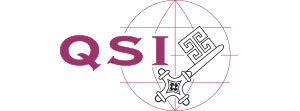How to pack medical packages
Both the MDD 92/43/EEC and the MDR 2017/745 allow packages of different products that are combined in a meaningful context for a specific intended use to be placed on the market. According to the MDD, these must be CE-marked products. The MDR also allows non-CE marked devices if their presence is justified within the intended purpose of the device. In regulatory language, these assemblies are referred to as “systems” and “procedure packs (PPs)” or generically “sets”. While the MDD does not have a precise definition of the terms, the MDR specifies that:
-
- PPs are combinations packaged together for use for a specific medical purpose;
- Systems are not necessarily combinations packaged together, linked or combined together to fulfil a specific purpose.
Depending on the type of combination and on the nature of the products, such sets are regulated differently. At EU level, systems and PPs are known with and without their own declaration of conformity. Already under the old law, the production of sets according to Article 12 was quite easy to design; with the new freedom provided by the MDR, there is even more scope in the combination possibilities. For manufacturers, there is therefore a multitude of possible set combinations which, cleverly combined, documented and discussed, can be legally marketed as packs even without a separate declaration of conformity for the set. The only limits here are – almost – one’s own certification and creativity.
But what are the differences between packs that must be subjected to a mandatory conformity assessment by the combiner and those that may be placed on the market without such an assessment?
Simply considered, systems and PPs must be reassessed for conformity whenever
-
- this combination leads to a change in the intended purpose of one of the products included (e. g. guidewire that is now used in the central blood circulation instead of the intended peripheral blood circulation),
- a device is processed differently than its manufacturer or declaration of conformity specifies (e. g. unpacking, sterilization, storage conditions)
- a component does not bear a CE.
The expected highest risk class of a component determines the set class and the corresponding CE marking. For procedure packaging with a declaration of conformity, i.e. sets higher than class I, certification by a notified body is required.
If medical devices that have already been assessed for conformity are packaged together without any change to their intended purpose, no new declaration of conformity needs to be submitted. Without any change to the product, the existing conformity assessments of the original manufacturers apply. In this case, the manufacturer’s declaration according to Article 12 MDD or Article 22 MDR is sufficient, which the set packer has to include in his documentation and, if necessary, present during audits. The procedure pack packer must be able to prove that he has fulfilled the associated tasks. The set according to Article 12 MDD or Article 22 MDR does not receive a CE mark in its entirety.
Manufacturers of systems and PPs must register their activities with the relevant supervisory authorities. In Germany, registration in the DIMDI database has always been required up to now. According to the MDR, system and PP packagers have to register as economic operators in EUDAMED.
If you have any questions, TentaConsult Pharma & Med GmbH will be happy to advise you!
Your contact:

Frauke Stamm
Senior Consultant
+49 251 928715-67
Image source with kind permission and provision by Raguse Gesell. für med. Produkte GmbH (C)
Source: https://www.tentamus-web.com/tentaconsult-en/2021/11/19/systems-and-procedure-packs/

